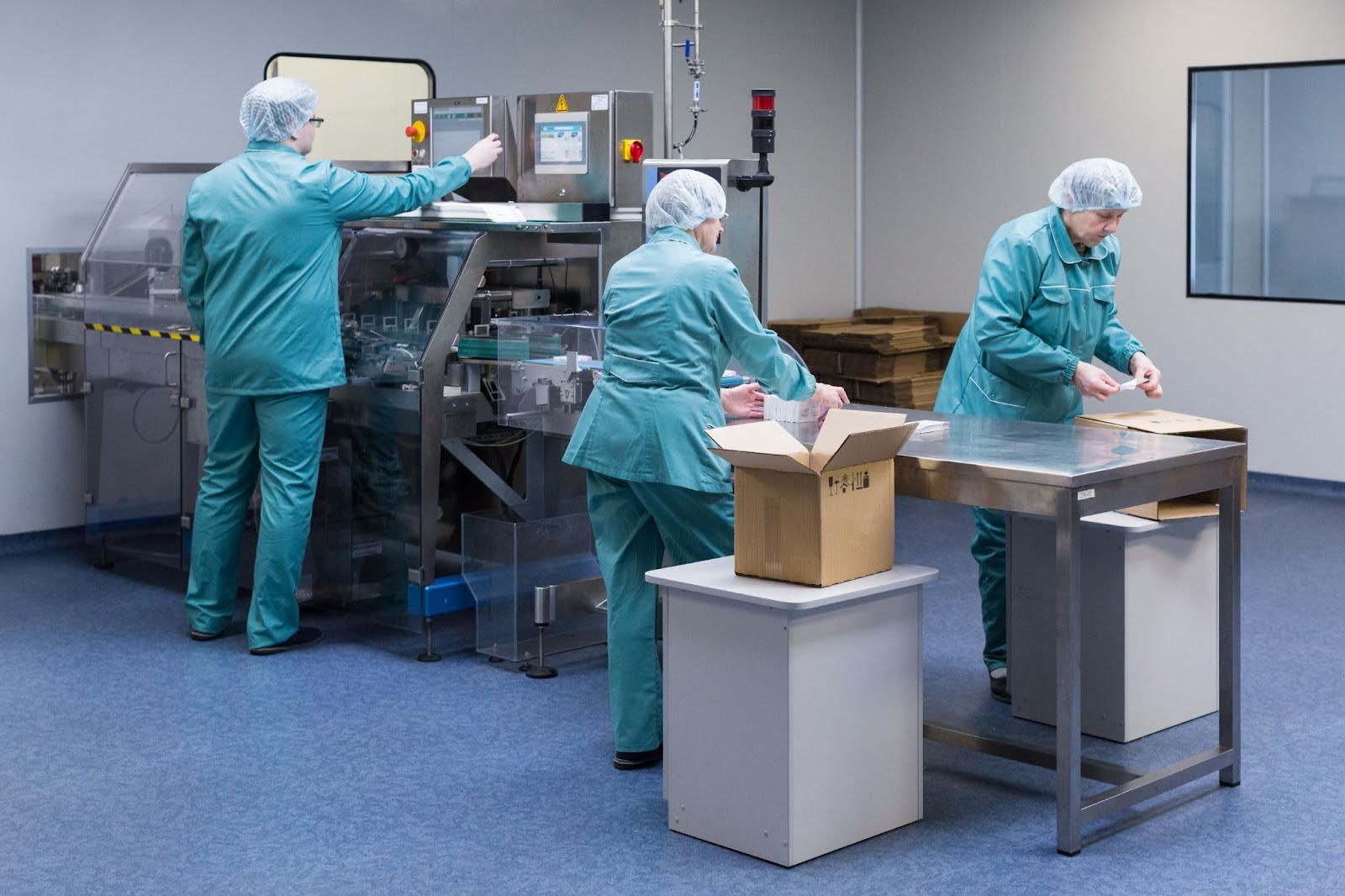by Simantini Singh Deo
8 minutes
Inside Regulatory Minds: How The FDA And MHRA Evaluate Contamination Control Strategies (CCS)?
Understand FDA and MHRA expectations for CCS and how pharma facilities can ensure compliance with Annex 1 and GMP guidelines.

Contamination Control Strategy (CCS) has become a key part of pharmaceutical manufacturing, especially after the release of EU GMP Annex 1 (2022). Regulators like the FDA and MHRA now expect CCS to be holistic, data-driven, and continuously improving—covering every aspect of facility design, operations, monitoring, and culture. Strong Annex 1 observations demonstrate that contamination risks are monitored through structured oversight and scientifically justified practices.
During inspections, regulators no longer see CCS as just a document but as proof of how well a facility understands and manages contamination risks. This article looks at how CCS is assessed, what lessons can be learned from inspections, and how companies can align with global expectations.
What Regulators Expect From CCS?
Regulators view CCS as a comprehensive, risk-based, and dynamic system designed to ensure product sterility and quality throughout the manufacturing lifecycle. It is not limited to microbiological control; instead, it encompasses all factors that may introduce or propagate contamination — whether viable, non-viable, chemical, or particulate.
From the regulatory perspective, a strong CCS must demonstrate:
- Holistic Integration: Every contamination control measure — facility design, HVAC, gowning, cleaning, utilities, environmental monitoring, and personnel training — should be interconnected under a unified strategy.
- Scientific Rationale: Controls must be justified by risk assessments and data rather than tradition or convenience.
- Dynamic Updating: The CCS should evolve as new risks emerge, processes change, or technologies advance.
- Governance & Ownership: Clear accountability should exist across departments, with management oversight ensuring consistent implementation.
Both FDA and MHRA consider CCS a living system that reflects the facility’s culture of quality and continuous improvement, not just a regulatory checkbox.
How The FDA Evaluates Contamination Control?
The FDA’s approach to CCS evaluation stems from its overarching focus on Good Manufacturing Practice (GMP) principles and Quality Risk Management (QRM). Closed system sterility models help reduce human-driven risks and support FDA expectations for contamination prevention. During inspections, FDA investigators aim to determine whether contamination control is embedded in the facility’s daily operations and whether risk mitigation strategies are truly effective.
FDA inspectors typically examine CCS through the following lenses:
a) Facility & Equipment Design: Inspectors evaluate whether cleanroom design, air handling, and material/personnel flows support contamination prevention. Particular attention is given to segregation between aseptic and non-aseptic areas, air pressure differentials, and the maintenance of unidirectional airflow in Grade A zones.
b) Environmental & Process Monitoring: The FDA expects robust, scientifically justified Environmental Monitoring (EM) programs with data-driven action limits. They often review how alert/action levels were determined, whether trends are analyzed, and how results influence decision-making.
c) Personnel Practices: The agency closely examines gowning procedures, aseptic interventions, and operator behavior. Deficiencies often arise from inadequate training or poor adherence to aseptic techniques.
d) Investigations & CAPA Management: FDA reviews how facilities handle excursions, deviations, and microbial contamination events. Weak root cause analyses or superficial corrective actions are viewed as red flags, suggesting poor CCS governance.
e) Data Integrity & Trending: Inspectors verify whether monitoring data is accurately recorded, trended, and reviewed regularly. Facilities are expected to identify early signals of risk rather than waiting for deviations to occur.
f) Continuous Improvement: The FDA favors facilities that use trend data, risk assessments, and technological tools (e.g., rapid microbial methods) to proactively enhance contamination control. A static or outdated CCS suggests complacency.
How The MHRA Assesses CCS?
The MHRA, which regulates medicinal products in the UK, has been one of the most vocal agencies emphasizing CCS as a core compliance requirement. Its inspectors expect firms to demonstrate a deep, process-wide understanding of contamination control that aligns with Annex 1 and MHRA’s own GMP guidance.
MHRA inspectors evaluate CCS from a systemic and strategic viewpoint, focusing on:
A) Documentation & Structure: MHRA expects CCS to be a single, cohesive document that brings together contamination control elements from across departments. Fragmented or incomplete documentation is a common deficiency.
B) Risk-Based Approach: Inspectors look for evidence that the CCS is built on formal risk assessments using tools such as FMEA or HACCP. They assess whether risks are ranked, mitigated, and periodically reviewed based on new data.
C) Cross-Functional Ownership: MHRA places high importance on collaboration between QA, engineering, microbiology, and operations. Inspectors often ask who “owns” the CCS and how oversight is maintained at the management level.
D) Effectiveness Review: Beyond documentation, MHRA evaluates whether the CCS is effective in practice — for instance, whether EM excursions, utility deviations, or cleanroom failures are properly investigated and used to strengthen controls.
E) Cultural & Behavioral Aspects: MHRA recognizes that contamination control is as much about behavior as it is about systems. Inspectors observe operator discipline, adherence to gowning, and awareness of aseptic practices. A strong “contamination control mindset” is seen as a key compliance indicator. Recent contamination control research shows that facilities with documented behavioral controls perform better during MHRA inspections.
Common Findings & Lessons from Regulatory Inspections
Over the past few years, both FDA and MHRA inspection reports have highlighted recurring CCS-related deficiencies. Understanding these findings provides valuable insight into what regulators expect and where many facilities fall short.
- Fragmented or Generic CCS Documentation - Many firms present CCS as a collection of SOPs rather than a unified, risk-based strategy. Regulators expect a single, integrated document that links all contamination control elements and explains their interdependencies.
- Inadequate Risk Assessment - Facilities often fail to justify their controls scientifically. For example, air sampling locations or disinfectant rotations may not be supported by risk-based rationale, leading to non-compliance.
- Weak Environmental Monitoring Programs - FDA and MHRA both emphasize trend-based monitoring. Common findings include lack of trending, outdated alert/action levels, or insufficient sampling in critical zones.
- Poor Response to Excursions - Investigations are often incomplete or superficial, failing to identify the true root cause. Regulators expect thorough investigations that integrate data from multiple sources (e.g., HVAC performance, operator logs, EM data).
- Inconsistent Training & Culture - Regulators note that procedural compliance is only effective when supported by a strong quality culture. Gaps in personnel training, aseptic awareness, and ownership frequently contribute to contamination events.
- Failure To Maintain CCS Dynamically - A CCS that remains static for years, without updates following new equipment installations or process changes, signals poor governance. Regulators expect periodic CCS reviews, especially after significant modifications or audit findings.
Key Principles For Efficient Material Transfer And Airlock Control
To align with Annex 1 requirements and enhance aseptic assurance, facilities should implement the following best practices:
1. Design Airlocks Based On Functional Zoning — Airlocks must be strategically located between areas of differing cleanliness grades and designed according to their purpose—personnel or material. For materials, consider integrating VHP decontamination chambers or pass-through autoclaves for sterilized loads. The airlock’s size, airflow pattern, and pressure regime must support the cleanroom hierarchy while minimizing stagnation or turbulence.
2. Validate & Maintain Pressure Differentials — Proper pressure cascades are fundamental to preventing backflow of air from lower-grade to higher-grade zones. Each airlock should maintain a positive pressure differential—typically between 10 to 15 Pa—relative to the dirtier area. Periodic verification through calibrated gauges and alarm systems ensures sustained compliance.
3. Implement A Layered Wrapping & Unwrapping Procedure — Materials entering Grade A/B areas should be double or triple wrapped to facilitate progressive removal of outer layers during transfer. Each unwrapping stage should coincide with the transition into a cleaner zone. This minimizes the risk of transferring particles or microbes into higher-grade environments.
4. Employ Validated Disinfection & Decontamination Methods — Disinfection processes whether manual wiping or automated VHP cycles must be validated for contact time, coverage, and microbial efficacy. Using rotation of disinfectants and ensuring dwell times according to manufacturer recommendations enhances robustness.
5. Automate Transfer Where Possible — Reducing human intervention through automated material transfer systems, such as RTPs, isolators, or robotic handling, significantly lowers contamination risks. These systems also enable consistent performance and traceability through integrated sensors and audit trails.
6. Train Personnel On Transfer Protocols — Even the best-designed airlocks and systems fail without well-trained operators. Personnel should undergo periodic training on material transfer procedures, aseptic behavior, and incident response. Emphasizing aseptic awareness fosters accountability and vigilance.
7. Conduct Routine Environmental & Performance Monitoring — Establish routine monitoring within airlocks and at material entry/exit points. Monitoring should include non-viable particle counting, viable sampling (settle plates or active air sampling), and surface swabs. Data from these sources help identify contamination trends and inform CCS reviews.
What Preparations Must Be Done For Regulatory Inspection?
When preparing for an FDA or MHRA inspection, facilities should ensure that the CCS is not just documentation but a living, demonstrable system. Preparation steps include:
- Conducting mock inspections with internal audit teams.
- Ensuring CCS is cross-referenced in SOPs and understood by staff.
- Reviewing trend data, risk assessments, and CAPA logs for completeness.
- Training personnel to confidently explain their contamination control responsibilities.
- Keeping evidence of recent CCS reviews, system improvements, and management oversight readily available.
Being inspection-ready is about demonstrating control, consistency, and commitment — qualities that reassure regulators the facility is operating within a robust CCS framework
Wrapping Up!
The FDA and MHRA now view contamination control as a key sign of a company’s quality, not just a compliance task. They evaluate it through data, risk assessments, CAPAs, and staff behavior, including competence and culture. For pharma manufacturers, the message is clear: contamination control should be active, integrated, and constantly improving.
Following a CCS improvement guide helps facilities align expectations with FDA and MHRA inspection priorities. Staying aligned with regulatory expectations helps ensure compliance, product integrity, and patient safety.
FAQs
1) How Do Regulators Like The FDA And MHRA Assess CCS?
Regulators check if the CCS is complete, risk-based, and effectively implemented. They review documentation, trend data, and staff awareness to see if contamination is being properly controlled.
2) What Common Issues Do Regulators Find During Inspections?
Inspectors often find weak risk assessments, incomplete documentation, and poor environmental monitoring. Inconsistent training and lack of ownership are also frequent issues.
3) How Can Companies Prepare For A CCS Inspection?
Companies should keep their CCS updated and ensure all staff understand their roles. Regular mock audits and data reviews help identify gaps before official inspections.




